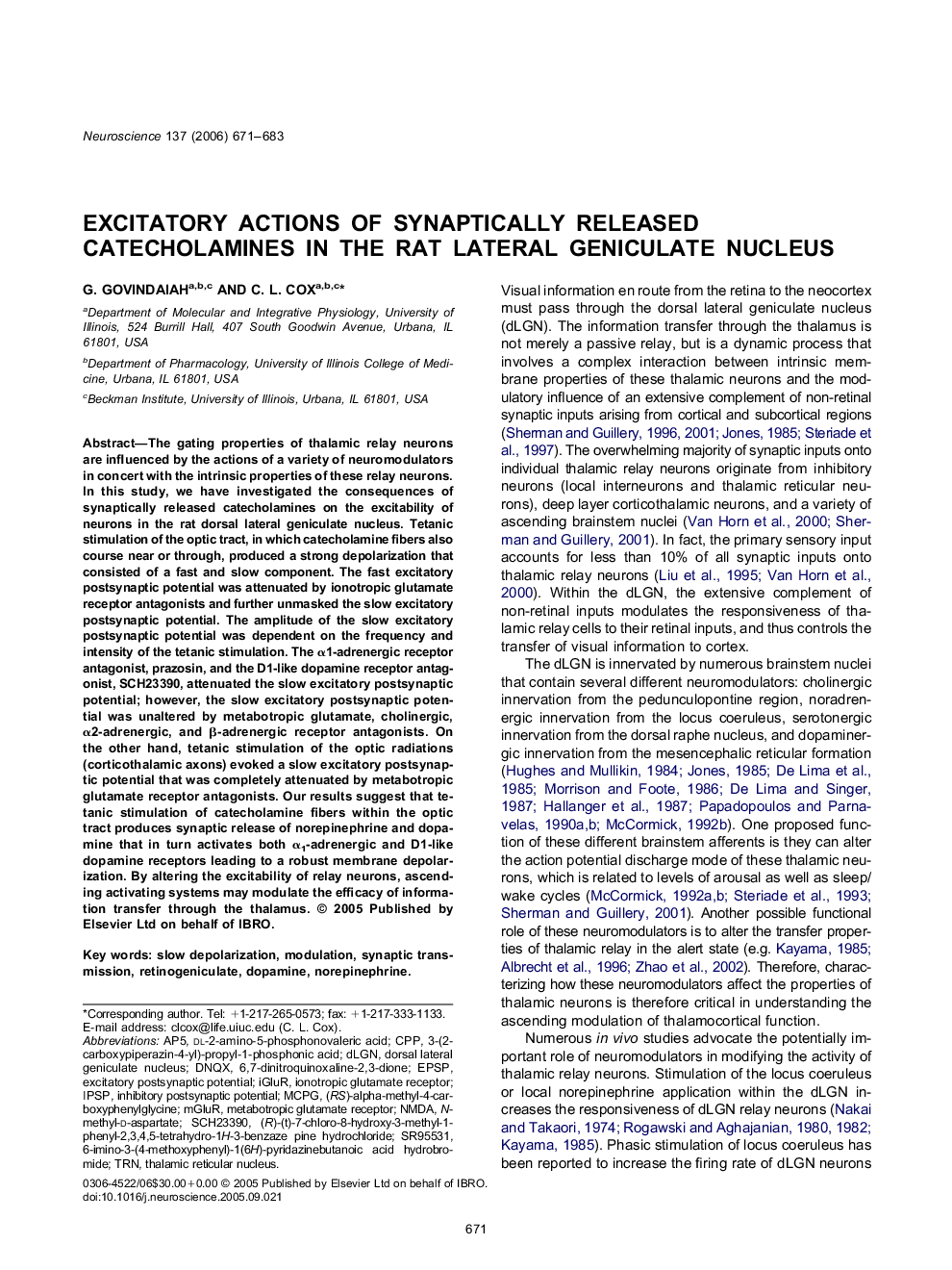| Article ID | Journal | Published Year | Pages | File Type |
|---|---|---|---|---|
| 4342862 | Neuroscience | 2006 | 13 Pages |
The gating properties of thalamic relay neurons are influenced by the actions of a variety of neuromodulators in concert with the intrinsic properties of these relay neurons. In this study, we have investigated the consequences of synaptically released catecholamines on the excitability of neurons in the rat dorsal lateral geniculate nucleus. Tetanic stimulation of the optic tract, in which catecholamine fibers also course near or through, produced a strong depolarization that consisted of a fast and slow component. The fast excitatory postsynaptic potential was attenuated by ionotropic glutamate receptor antagonists and further unmasked the slow excitatory postsynaptic potential. The amplitude of the slow excitatory postsynaptic potential was dependent on the frequency and intensity of the tetanic stimulation. The α1-adrenergic receptor antagonist, prazosin, and the D1-like dopamine receptor antagonist, SCH23390, attenuated the slow excitatory postsynaptic potential; however, the slow excitatory postsynaptic potential was unaltered by metabotropic glutamate, cholinergic, α2-adrenergic, and β-adrenergic receptor antagonists. On the other hand, tetanic stimulation of the optic radiations (corticothalamic axons) evoked a slow excitatory postsynaptic potential that was completely attenuated by metabotropic glutamate receptor antagonists. Our results suggest that tetanic stimulation of catecholamine fibers within the optic tract produces synaptic release of norepinephrine and dopamine that in turn activates both α1-adrenergic and D1-like dopamine receptors leading to a robust membrane depolarization. By altering the excitability of relay neurons, ascending activating systems may modulate the efficacy of information transfer through the thalamus.
